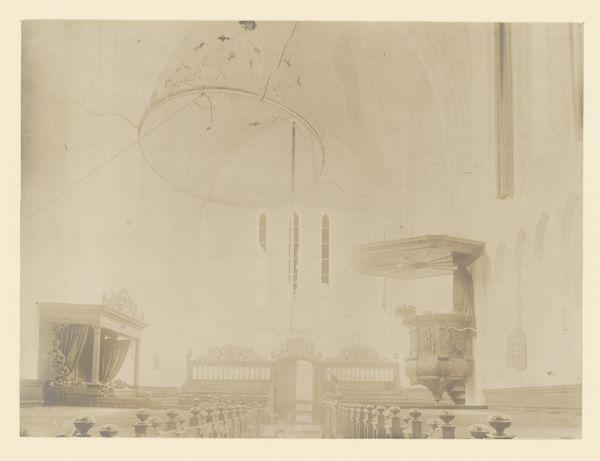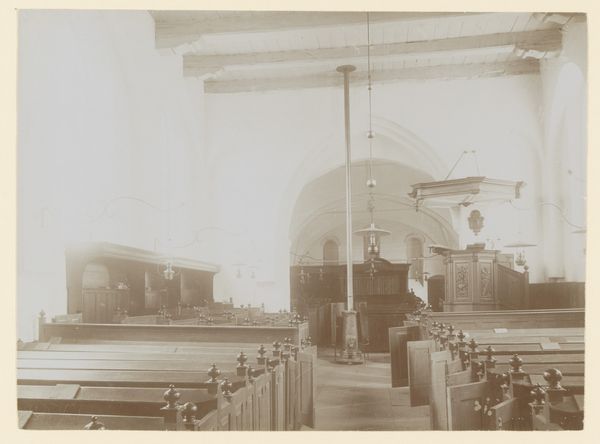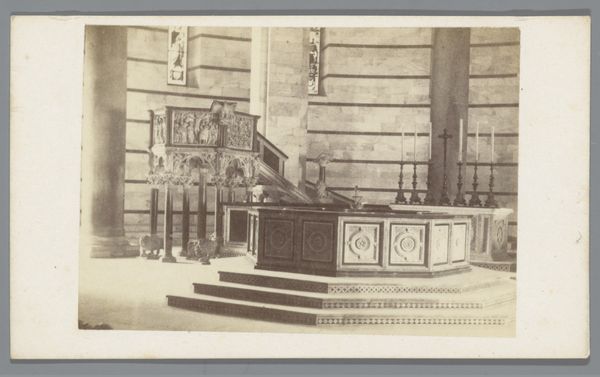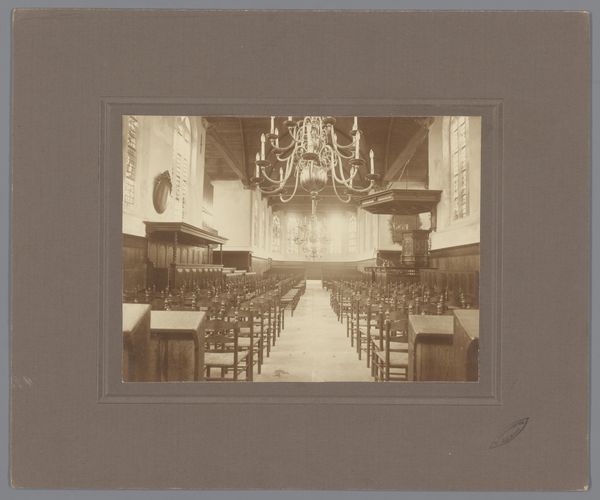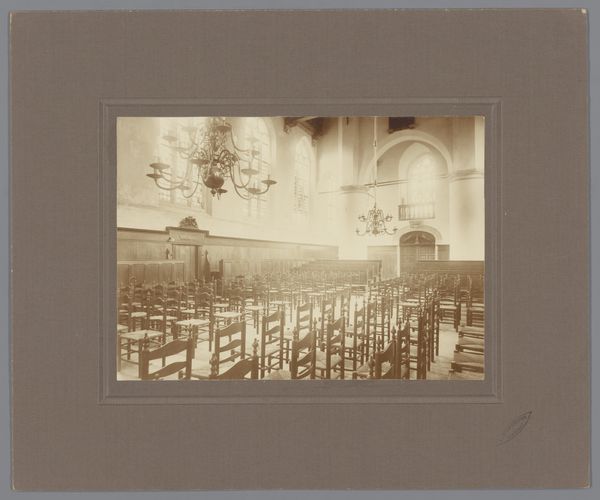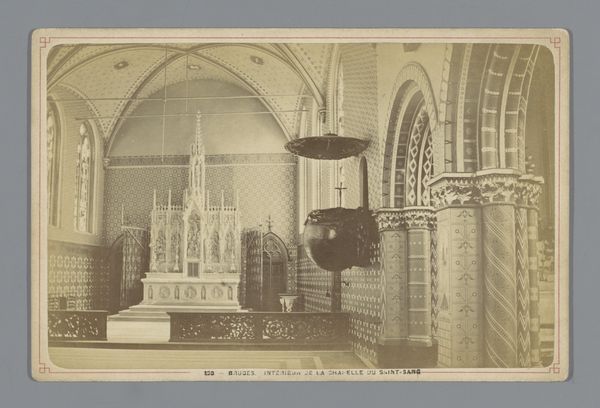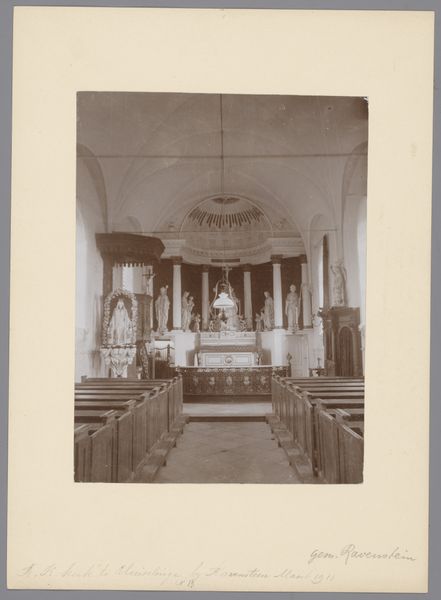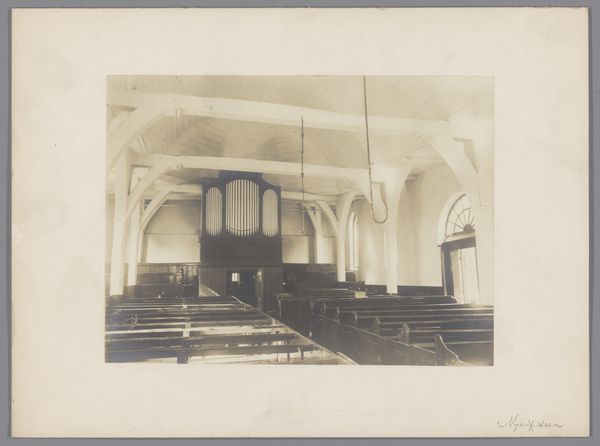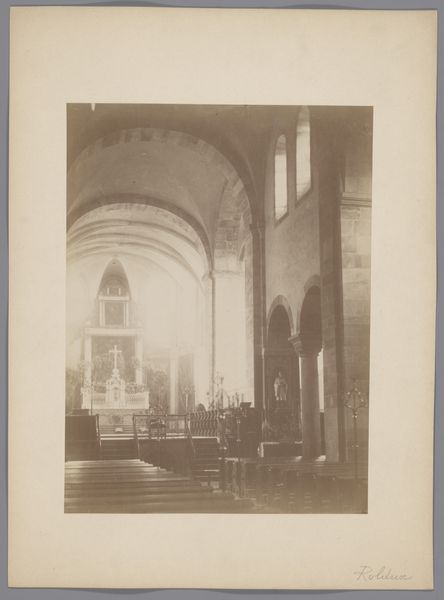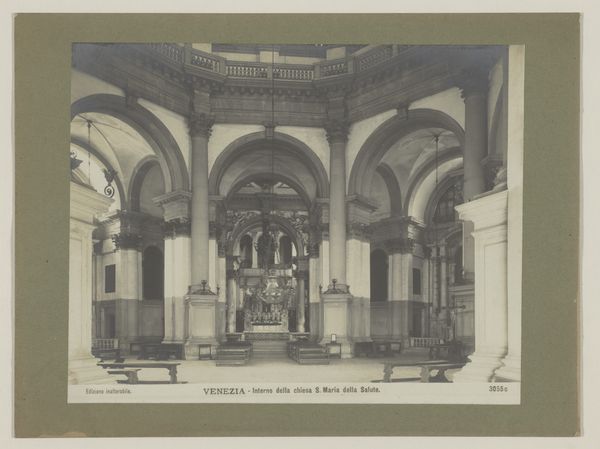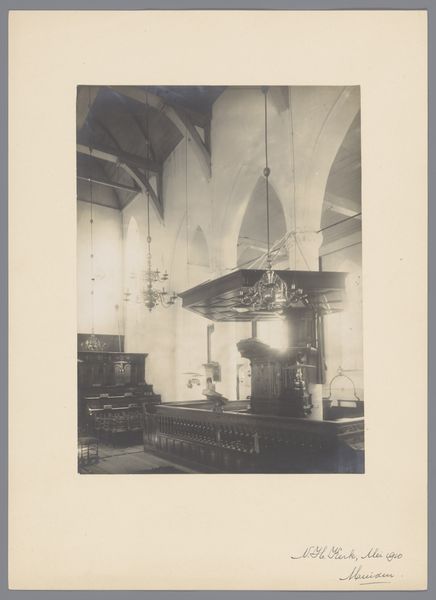
Dimensions: height 156 mm, width 222 mm
Copyright: Rijks Museum: Open Domain
Editor: Here we have "Interior of the Abbey Church in Aduard," circa 1900, by an anonymous artist. It appears to be a photograph. The sepia tones lend an antiquated, almost ghostly air to the space. I’m immediately struck by the composition. All those linear rows of pews… What do you see when you look at this image? Curator: Immediately, I'm drawn to the intricate geometries and formal relationships at play. Consider how the artist uses perspective to guide our gaze. The rows of pews converge, leading the eye to the apse, where the play of light and shadow articulates the space. It gives dimension to the plane, yes? Editor: Yes, I see it. But I also see that some shapes contrast with the lines and angles. Like the bulbous column on the left or the curvaceous detail of the pulpit. How do they contribute to the piece? Curator: Precisely! This tension—between linear structure and decorative form—creates a dynamic interplay. We have an organized system but simultaneously disrupted. That pillar, those flourishes, provide textural variance, breaking the rigidity. Editor: Is the formal playfulness why you consider it art instead of merely an artifact or relic? Curator: Formalism values that play; we focus on the structural elements, on form rather than content. One might ask if the photograph itself elevates the subject, manipulating light and angle to create an intentional viewing experience and creating a conversation on perspective that a simple record couldn't convey. What do you make of that suggestion? Editor: Well, I hadn’t considered the photograph's formal qualities before, only the overall aesthetic mood it creates. So much to consider. Curator: Indeed. The art is in seeing, in parsing those relationships and structural elements. A rewarding exercise. Editor: Absolutely, I appreciate your thoughts. Thank you.
Comments
No comments
Be the first to comment and join the conversation on the ultimate creative platform.
